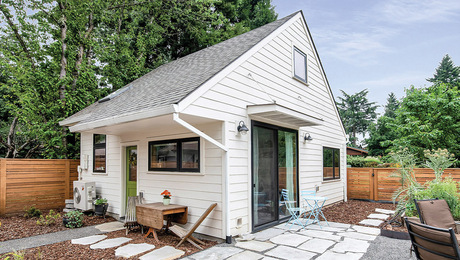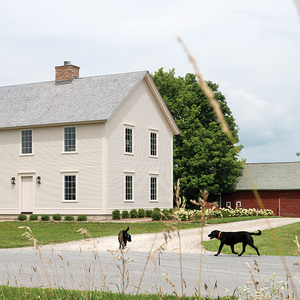Door Casing trouble with non plumb walls
Hello all, I’m new to this forum but found through resesearch here that some folks may be able to help me with my specific question. I don’t do this professionally but have quite alot of experiance in working on houses with my father. So far i’ve helped him build 2, and have worked on numerous pieces of fine furnitire.
I’ve bought my own house now and am doing some major remodiling, and have ran into an issue that has literally stumped me and frustrated me to no end. The walls in this house are HORRIBLE! Not only out of plumb but seem actually bowed.
Problem #1 I built the jamb for a set of bifold doors by hand. The jamb is perfectly square, plumb, and level across the top. Doors open and close perfectly. But in order to get the jamb plumb i had to hang it passed the wall. 3/8″ in its worst spots. I’ve come to the conclusion that i’m going to cut the jamb either rout or plane it so that there will be much less of a gap behind my casing. My only concern was that in relation to the door which is plumb you’ll notice that jamb is not. This may just be picky, let me know your thoughts
Problem #2 I just hung a new kitchen door, same problem. But this time the part that i had to hang passed is the hinge side. Which doesn’t leave me the option of cutting the jamb becase then it will be short of the door itself. I literally don’t know what to do. I can’t “finesse” the wall with the sledge hammer method. The only options i see is to fill the gap as much as possible with a foam and then caulk it. Or rip a strip of wood and place it behind until it tapers off and then caulk. I’d rather not re hang the door out of plumb.
Please help my with my dilema!
Bedroom Bifold’s
Kitchen Door



















Replies
Sometimes you've got to be creative. And the right trim treatment can hide a multitude of sins.
What's up Doc.?
Sorry, I couldn't resist...
I would suggest you rout, chisel, or plane (rabbet) the back side of the reveal edge of the trim, but just enough to allow the trim
to fit flat against the wall, make the rabbet a little wider than your reveal dimesion to give yourself some wiggle room and taper it
(top to bottom) as needed so the trim sits flat against the wall and the jamb. If your finish is paint, you have more
room for "fudge", but If your staining you have way less "forgiveness".
You could consider using 5/4 trim stock if you have to remove too much material along the reveal edge.
Good Luck Doc! :)
Geoff
I would tack the trim down, tack a filler strip to the side of the trim, then set a scriber tool to scribe the strip. Take the strip off the trim and cut along the scribed line. Then you will have a nice filler to put behind the trim.
In case you wonder what a scriber tool is, this is what I mean. http://www.generaltools.com/8431--Pencil-Compass-And-Scriber_p_252.html You can also improvise like in the video. http://www.dailymotion.com/video/xwvo79_scribing-trim-to-a-wall_lifestyle
In your case you would be doing the reverse of the video, you want to keep the part that is being cut off in the video. So your piece would be zero thickness at points where the strip touches the wall. If no part touches the wall then set the scriber so that the the strip will be the thickness needed to fill the gap.
There is no one best way to do this.
If you've mostly just worked on new construction, welcome to the world of remodeling/renovation. In this situation, the first thing to do is take a deep breath, shake off the frustration and assess the situation.
If you try to make the correction all in one place, it most likely to show, so try to fudge things all around. The closet doors may be the easiest to deal with because you can fudge on both the inside and the outside of the door. You can trim some off of the door jambs, plane the outside edge of the trim, beat back the drywall some, use the shim/caulk treatment, etc.
It's tough to give detailed advice without being there.
Backband
I'd add backband to the outside edge of the trim. Back band can be as thick as you want. I'll reference 1" x 4", or 3/4" thick by 3-1/2" wide stock for the back band in this example, but I'll often use 5/4 for a beefier look.
With your door hung plumb and your door casing in place, set a piece of 1x4 stock against the outside edge of the door casing. Set the 3/4" thick edge against the bowed wall and put the 3-1/2" width of the board against the outside edge of the door casing. Scribe the edge to the bowed wall.
Cut to the scribe line, fit as needed.
Set the scribed back band in place against the bowed wall, tack it to the door casing.
Now go to "door side" of the back band. Let's say you want the back band to be 3/8" proud of the door casing. Set your scribe to 3/8" and run the scribe along the edge of the door casing.
Cut along the line, then reinstall the back band.
The outside edge of the back band will be scribed nicely to the wall. Then inside edge fo the backband will stand 3/8" proud of the door casing.
Repeat as needed on the top and other side of the door.
If you need a visual on back band to see how it siply butts to the outside edge of the door casing, here's a simple photo. The back band can be any profile you want.
View Image